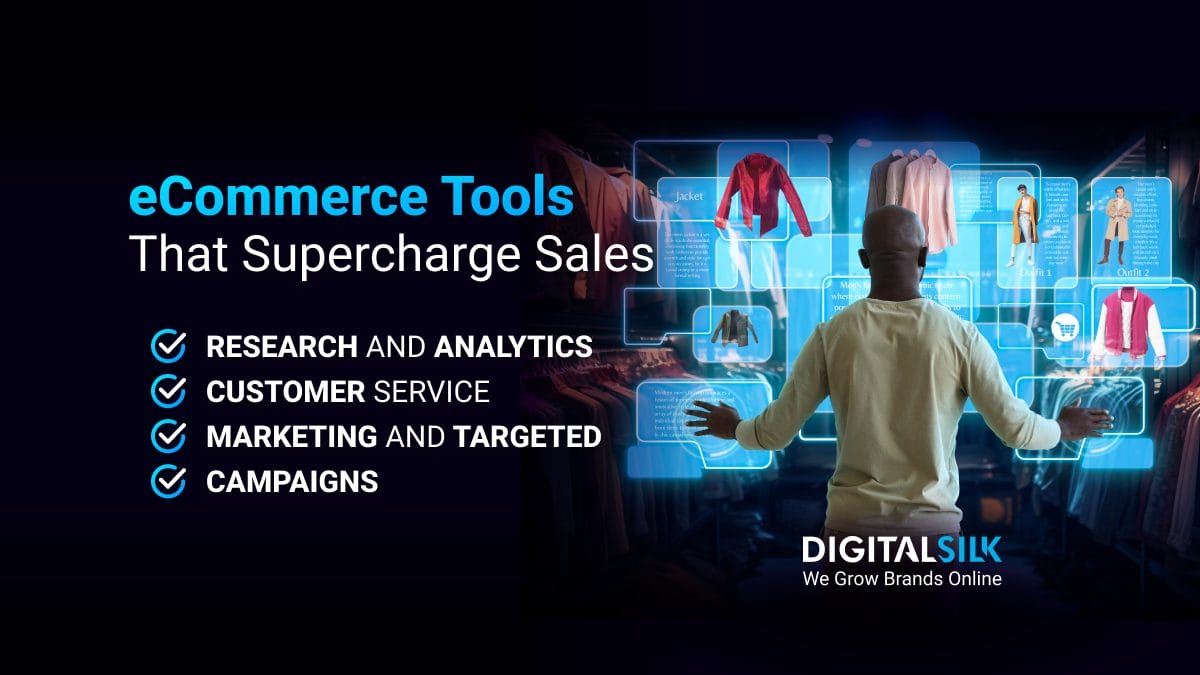Founded in 2011, U.S. eCommerce brand Fab skyrocketed in popularity seemingly overnight when it reached 1 million subscribers within just six months, and grew to a whopping $1 billion in worth.
Three years later, the company’s CEO sold the brand for just $15 million.
What went wrong?
Fab lost its competitive edge and focused too much revenue on initial marketing campaigns for one main product.
This resulted in unreliable purchase patterns from customers. Unfortunately, Fab was an eCommerce fail.
If you run an eCommerce business, there are certain challenges every e-store should anticipate and prepare for.
We spoke with industry experts about the challenges of eCommerce your business might face and compiled a list of the top 17, plus practical advice and solutions for each, to help you avoid a similar fate.
Digital Silk builds custom e-stores. Request A Quote
The Biggest Challenges Of eCommerce Today
The world of eCommerce is constantly evolving, presenting both opportunities and challenges for online store owners.
By identifying potential obstacles and planning effective solutions, you can ensure a smooth and profitable journey in the competitive online marketplace.
But what are the biggest challenges you might face?
We have all the expert studies and data, but we also want to hear from you!
Cast your vote in our poll below to share your main eCommerce challenge.
According to industry experts, here are the top challenges associated with running an online store.
eCommerce Challenge #1: Conversion Rates
Your store’s conversion rate is the percentage of all website visitors that made a purchase.
The challenge for eCommerce retailers?
They may be disappointed to see single digit conversion rates.
The solution:
- Be prepared for conversion rates to be lower than you hoped for: 3% is the average conversion rate. But it also depends on other factors such as the market you’re selling it in and the products or services you offer.
- Set your eCommerce website up to drive conversion: Key website elements like search engine optimization aimed at your target audience, messaging that builds a strategic conversion funnel and strong calls-to-action that define the user journey can help improve conversion rates for your website.
eCommerce Challenge #2: Online Identity Verification
While fraud may happen from time to time in a physical storefront, it’s much more common in an eCommerce environment – especially if the payment process isn’t secure.
Purchases made with a fake phone number, address or stolen payment information can result in a massive loss of revenue.
So how can you secure payment for your customers and avoid fraudulent transactions?
The solution:
- Look for signs of suspicious activity: Indications of fraud may include unusually high volume of orders or zip codes that do not match a state or a city. Always send an automated verification link for customers that sign up and purchase, to validate that the customer is genuine and the purchase is authentic.
- Use secure software solutions: Set up an eCommerce security solution to identify fraudulent attempts by using multi-layered authentication. These programs have features such as SSN verification, identity checks and instant authentication, making it possible for your eCommerce business to stay ahead of fraudsters.
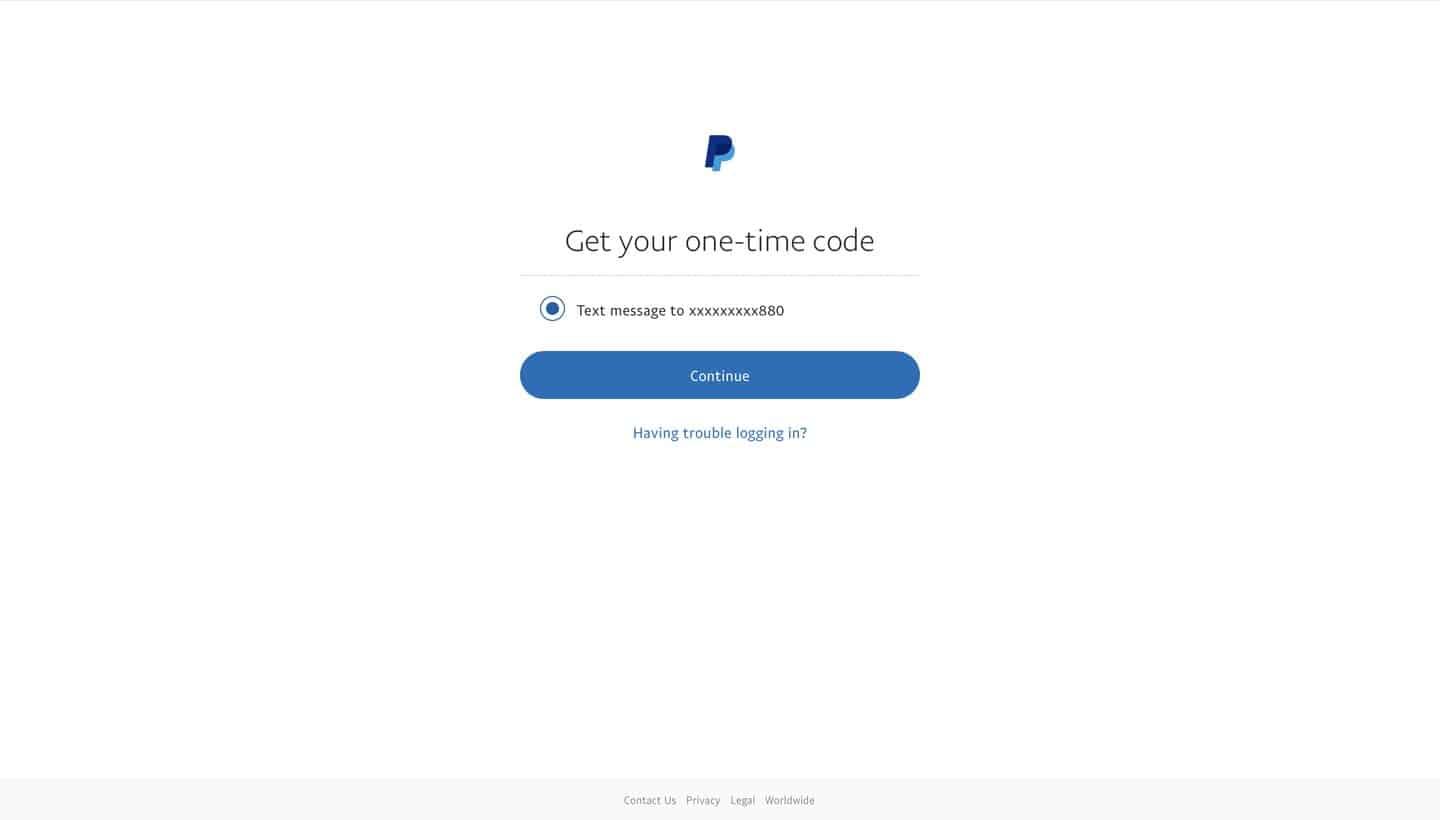
[Source: PayPal]
eCommerce Challenge #3: Consumer Expectations
73% of global customers consider customer experience as an important factor in their purchasing decisions.
What does this mean?
Your customers’ shopping experience is as important as price or even the product itself.
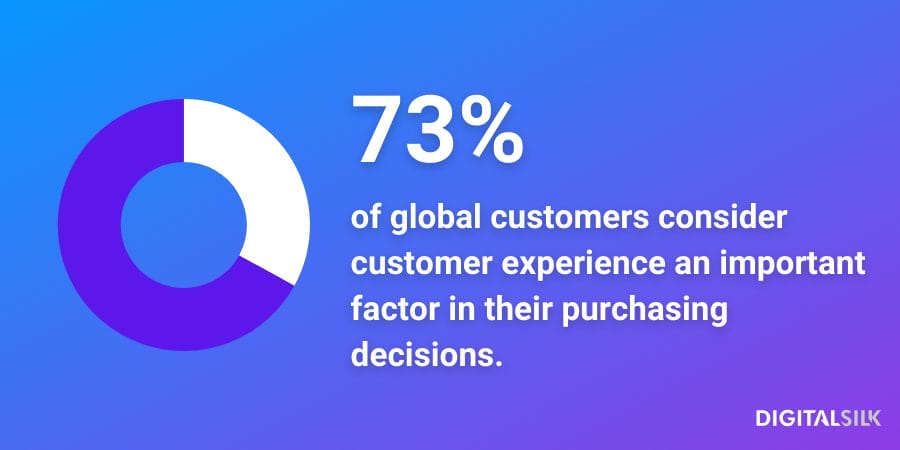
Your product isn’t the only thing that matters when meeting customer expectations. Customers want more.
eCommerce giant, Amazon, for example, raised the bar with their now renowned shipping system.
How is an eCommerce brand to compete?
The solution:
- Integrate an order fulfillment process: A strategic process allows your business to receive and store inventory, process, pick, pack and ship your orders in a timely and well-structured manner that can result in higher customer satisfaction.
- Consistently evaluate your service: Constantly assess your customer service by reviewing customer complaints and performing customer surveys. Update your processes and policies as needed to ensure you’re meeting customer expectations.
- Establish customer connection: Ensure your customer feels valued and connected to your brand. You can establish this connection by sending personalized emails or text messages with product updates, shipping alerts, birthday messages and even “We miss you, here’s a discount code” notes to help improve customer retention.

[Source: Bath & Body Works]
eCommerce Challenge #4: Customer Support
Integrating customer service with artificial intelligence is becoming increasingly popular.
In 2020, only 34% of online shoppers worldwide were comfortable receiving customer service from AI when shopping online at eCommerce businesses.
Today, 80% of U.S. customers believe AI and chatbots will bring at least one benefit to their shopping experiences.
Chatbots are helpful for lead generation and are cost-efficient, but human support remains vital in personalizing your services and directing your AI tools.
The solution:
- Add a chatbot for simple inquiries: AI chatbots can cut your response times drastically by providing immediate answers to common questions. This will reduce your need to spend on customer support while improving customer satisfaction by swiftly giving your audience what they came for.
- Don’t forget human touch: According to a study by American Express, 40% of customers prefer talking to a human on the phone for more complex issues such as payment disputes. While offering automated customer service is convenient, customers still prefer to talk to a human agent when complex issues about money are involved, because they want immediate and accurate answers, unlike chatbots which offer a scripted and automated response.
- Gather feedback: Collecting feedback is important whether your customer support is human or robot. You can understand how your customers feel about your support team’s performance when you send out customer satisfaction surveys after they experience support through calls, email or chat. Surveys will help you collect insights into the areas your support team can improve on. Use these insights to take action and continually improve your customer support.

[Source: Zendesk]
eCommerce Challenge #5: Cybersecurity Issues
Cyberattacks can compromise the security of your eCommerce website by infecting it with viruses and, even worse, they can compromise the security of your customers’ sensitive data, which can damage your brand reputation and turn customers away for life.
This scenario is one of the most significant issues to overcome in the eCommerce business and it is certainly one of the biggest nightmares of every eCommerce owner.
The solution:
- Manage your own servers: Ensure your eCommerce store website is hosted on a standalone server dedicated only to you. Sharing the same space on one server with multiple other sites is risky; if some of those websites get hacked, the malware files may infect the entire server – including your store.
- Backup your data regularly: Creating a backup of your entire database and all your files is essential for eCommerce businesses. The general rule of thumb is, the bigger the website, the more often the backup should be performed. At Digital Silk, we run daily backups of all the websites we maintain.
- Install security plugins and safety components: These are specially designed to prevent hack attacks. There is a great online market of security plugins for different systems and platforms that include firewalls, two-factor authentications and more.
- Update your eCommerce platform regularly: Make sure you update your platform regularly with official patches, plugins and other software developed by its creators. Their teams work actively on identifying current threats and create solutions to stop them in their tracks. (If you’re not sure which eCommerce platform is right for you, check out our Magento vs. WooCommerce article to compare these two popular platforms head to head!)
eCommerce Challenge #6: Shipping
As the famous Drake meme goes:
Tag a friend who loves free shipping!#meme #funny #drake #shopping #shopaholic #freeshipping pic.twitter.com/XWjIymwJ1r
— Loans Australia (@LoansAustralia2) April 30, 2018
Customers are willing to buy a product that’s more expensive, as long as shipping is free.
According to the National Retail Federation, 60% of consumers anticipate free shipping from retailers.
But before you think of shoppers as cheap, there’s a bigger picture behind the importance of free shipping. Free shipping encourages online shopping and can increase your eCommerce sales.
In fact, 79% of Americans said that free shipping would raise their chances of online shopping.
So, how can you bring down costs for shipping?
The solution:
- Wrap up all costs: When you incorporate all costs (including shipping fee) into your product’s prices, it can be more attractive to your customers.
- Purchase bulk supplies: Need poly mailers (lightweight plastic envelopes) or bubble wrap for your packaging? When you buy supplies in bulk, you can save around 25%!
- Prepare for seasonal shipping rates: From holidays such as Christmas and New Year’s to weather conditions like ice and snow, freight availability can impact deliveries and shipping rates because of transport demand. Create a contract with your shipping partner to get consistent rates regardless of the season you’re dealing with.
eCommerce Challenge #7: Product Returns & Refunds
Due to the growing demand of online sales, product returns present a challenge for eCommerce and online retailers since they are vulnerable to workforce inefficiency and worse, return fraud.
Return fraud is when a customer purchases a product that is of good quality, uses it, but never intends to keep it. In exchange, the customer asks for a full retail price from the retailer.
The question is: how can you give your customers peace of mind by knowing they can return products they aren’t satisfied with, without potentially damaging your business through losses in shipment, revenue and reputation?
The solution:
- Be transparent about your return and refund policies: Ensure customers of your online business can find detailed info on this very easily in your Terms & Conditions, FAQ pages and even your checkout page, and make sure the policies are clear.
- Avoid imperative phrases in your policy wording: Phrases like “You are required” and “You must” can sound harsh and may intimidate customers. Try to soften your language in return policies while still being transparent.
- Provide your customers with options: If possible, provide various methods of shipping, payment and refunds as well as certain bonuses such as coupons and discounts for people who are dissatisfied with their purchase. Offering alternatives can help encourage customers to return and soften the blow, if you will, when something doesn’t go as planned.

[Source: Sephora]
eCommerce Challenge #8: Growth
According to CSA Research, 76% of online shoppers favor products with information written in their local language, while 40% won’t buy from the websites of eCommerce businesses that don’t provide other languages.
What does this mean for your eCommerce business?
You need to define your current ecommerce infrastructure’s reach. Do you offer local, national or international shipping? Does your shipping align with your consumer reach?
Borderless eCommerce — retailers selling their products and services to a global audience — has skyrocketed in recent years. If there are consumers outside of your local area that want to make a purchase, how can you reach them?
The solution:
- Implement a multi-language site: By providing product information using multiple languages, you can support your diverse customer base and open up your business to newer target audiences that were previously out of reach.
Have a Shopify e-store? Find out how to build a multi-language Shopify webiste.

[Source: Visa]
eCommerce Issues & Challenges To Anticipate In 2023
From setting realistic marketing budgets to providing a safer data privacy experience for your consumers, here are the top challenges of eCommerce you should anticipate in 2023.
eCommerce Challenge #9: Marketing Budgets
Marketing budgets continue to be squeezed year-on-year as businesses look to control expenses during inflationary prices.
This trend is highlighted by Gartner’s 2023 study, showing budgets have fallen from 9.5% of total revenue in 2022 to 9.1% in 2023. This fall is even bigger when comparing to 2016 when budgets were 12.1% of total revenue.
In turn, your eCommerce business must find cost-effective and efficient ways to market your products and boost brand awareness in 2024.
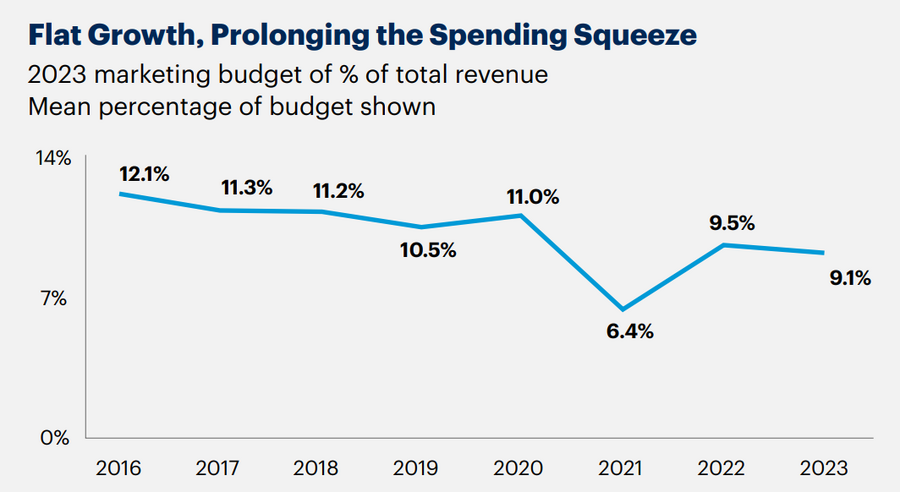
The solution:
- Target specific audiences: Targeting specific audience segments increases your chances of higher conversion rates and ensures you’re not wasting time or money on consumers who aren’t interested.
- Monitor your marketing analytics: Be very thorough in tracking your marketing analytics and follow how efficient your digital marketing campaigns are. If something’s not working, analyze it and make a change to improve it.
Speak with our experts. Set Up A Consultation
eCommerce Challenge #10: Providing An Omnichannel Experience
Knowing that multi-channel shoppers spend three times more than single-channel shoppers is a strong incentive to overcome this eCommerce challenge.
With eCommerce stores, comparison websites, online marketplaces, social media and bricks-and-mortar stores, the modern shopper has a large number of touch-points they can reach out through.
So how can you ensure you’re reaching your target audience on the right platforms, and providing an omnichannel experience?
The solution:
- Identify the most important channels for your customers and optimize them: What platforms do your audience use? There’s no reason to waste time or money on Facebook, for example, if your target market prefers TikTok and Snapchat.
- Define the customer service solutions your consumers prefer: This might be chatbots, live call centers, text message CS agents or others. (If your social strategy needs a boost, check out our guide on how to create a social media branding strategy!)
Starting today, Starbucks® Rewards members get 25 Stars when you bring your clean, reusable cup into our cafés for your drink order. We’ll also take 10¢ off your drink!
— Starbucks Coffee (@Starbucks) April 22, 2022
Valid at participating U.S. stores on in-store beverage purchases only (maximum 3 times per day). pic.twitter.com/G190rNO2ab
eCommerce Challenge #11: Zero-Party Data
Consumers want data privacy more than ever.
In 2021, Apple’s iOS 14 privacy update revolutionized data privacy by limiting the privacy private data social media platforms like Instagram and Facebook can gather from Apple devices.

But how can you build a stronger relationship with your customer while maintaining their trust if you give them this option?
By asking for zero-party data, customer details that are consensually shared directly to a business, or their permission to voluntarily share their data with you.
The solution:
- Collect zero party data: Zero party data is collected through website activity, subscription information, customer profiles and online quizzes. Once you have your customer’s permission to collect their data, you can use it for targeted marketing and to create customized product suggestions.
eCommerce Challenge #12: Brand Management
Brand reputation management requires constant observation on how your customers perceive your brand while taking strategic action to improve your brand’s image.
Let’s look at a brand reputation management example from KFC UK in 2018.
KFC’s UK operations faced a chicken crisis on February 16, 2018. They started running out of ingredients including their coveted “finger lickin’ good” chicken and just a week after, hundreds of branches were forced to shut down.
Of course, this shortage of supply in chicken had the nation concerned. Will they be living in an era where Colonel Sander’s famous 11 spiced chicken ceased to exist?
To respond to the outrage, KFC released a cheeky campaign to address the chicken crisis: rearranging the letters of KFC to FCK.
KFC’s ‘our bad’ ad is brilliant. pic.twitter.com/CHFU5HDcrO
— Alex Goy (@A1GOY) February 23, 2018
KFC took this unfortunate event and turned it around to highlight that they are a brand of transparency and humility.
The lesson? Building trust through transparency is key to building a sustainable eCommerce business.
We provide custom digital solutions. Schedule A Consultation
Enduring eCommerce Challenges That Arose During The Pandemic
Due to the global COVID-19 pandemic, the world saw an uptick in eCommerce and a shortage in supplies, putting pressure on retail owners around the world.
Here are the challenges of eCommerce that were amplified by the pandemic, and may be sticking around for some time:
eCommerce Challenge #13: New Technologies
A significant challenge of eCommerce is the fact that online shoppers have to purchase products without the ability to physically examine them first.
To ease anxious online shoppers, many brands are looking into new technologies such as augmented reality (AR) and virtual reality (VR) to gain a competitive advantage over this challenge of eCommerce.
Augmented reality allows eCommerce businesses to show customers what a product would look like in their real space (think visualizing a sofa in your room), while virtual reality can help showrooms for example, to enable customers to visualize the product in a virtual setting but from the comfort of their home.
This visualization tool often solidifies a customer’s decision to make a purchase, as it increases their confidence in the product.
The solution:
- Create a VR shopping experience: Hire a team of web developers to integrate an interactive VR experience on your site. Whether it’s an image your customer can spin around with the movement of their mouse to see all angles of the product, or an interactive video on your site, a VR shopping experience can build a more immersive shopping experience for your customers and increase conversion.
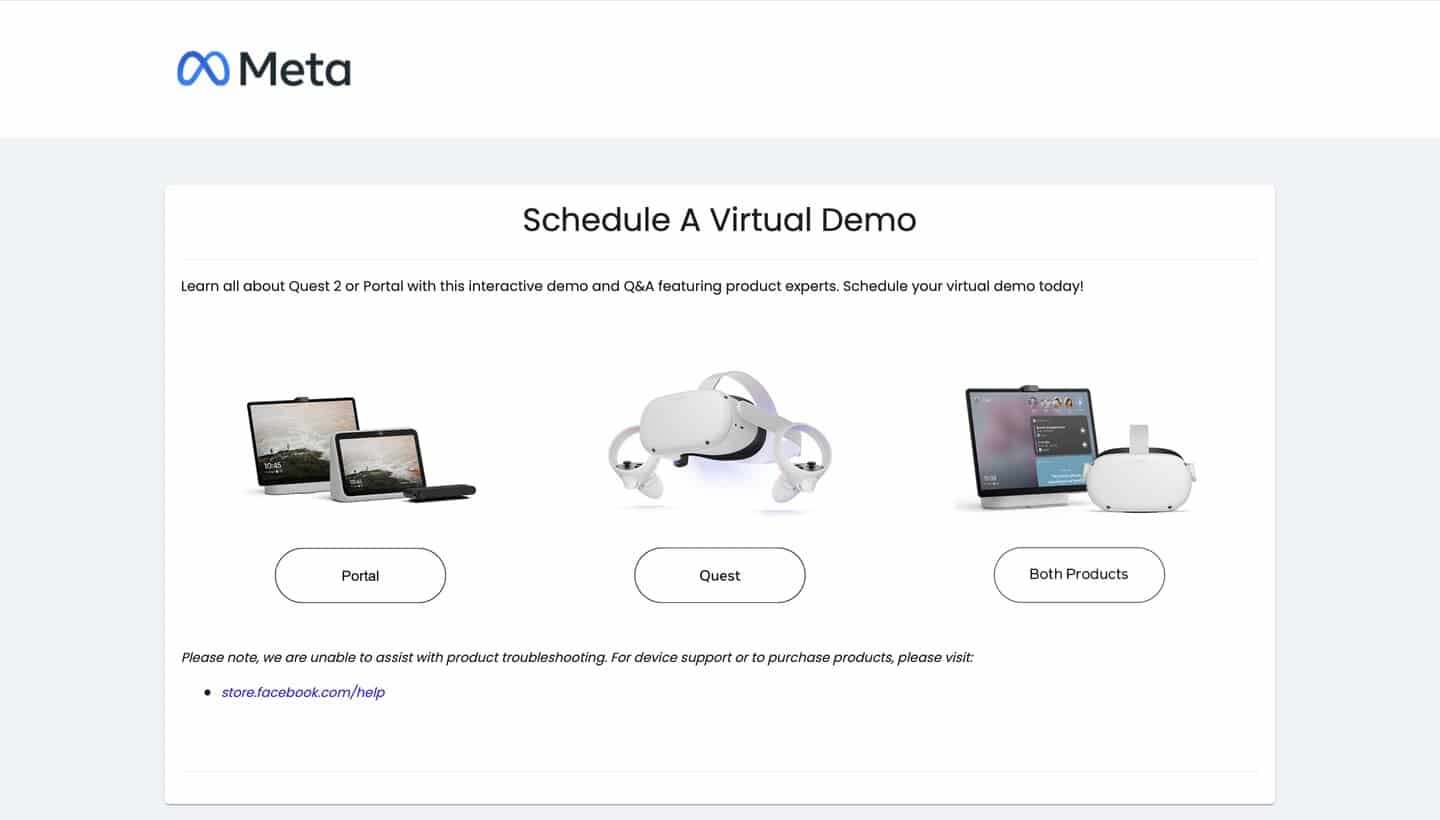
[Source: Oculus]
eCommerce Challenge #14: Logistics
A disruption in manufacturing, the temporary halt in the flow of finished goods and raw materials and a shortage of chips used in the automotive industry, gaming consoles and more are the results of the nationwide lockdowns imposed by the global pandemic.
With more than 169 industries affected by the global supply chain issue, including the warehousing industry as one of the sectors largely affected, how can your business survive this eCommerce challenge?
The solution:
- Track your inventory: With supply chain disruptions, it’s important to know what products you have in stock and what products need replenishing to avoid last-minute restocking of your popular items. You can utilize different inventory tracking methods such as cloud-based software, inventory management systems and third-party logistics for real-time data available around the clock.
- Stay informed: Stay up-to-date with the current news and trends in your industry. While supply chain disruptions can happen anytime, you can often predict when they’re about to happen and create a plan to help minimize the disruption.
eCommerce Challenge #15: Labor Shortage
A continuing problem that’s been aggravated by the pandemic is the current labor shortage.
According to the U.S. Bureau of Labor Statistics, 4.4 million Americans left their job in February 2022, with retail being the top industry affected.
The eCommerce industry is at risk of labor challenges because of high employee turnover rates, global supply chain issues and the remote work movement.
The solution:
- Improve your recruiting process: Improve your recruiting process by asking for employee referrals, ensuring your job descriptions are detailed and streamlining your application process to hire the right candidates who are looking for a long-term position.
- Create a healthy workplace and offer benefits: A recent Gallup study found that only 34% of employees are engaged at work. By improving your work environment and offering employee benefits, your workers will feel more valued and satisfied, decreasing the chances of them leaving your business.
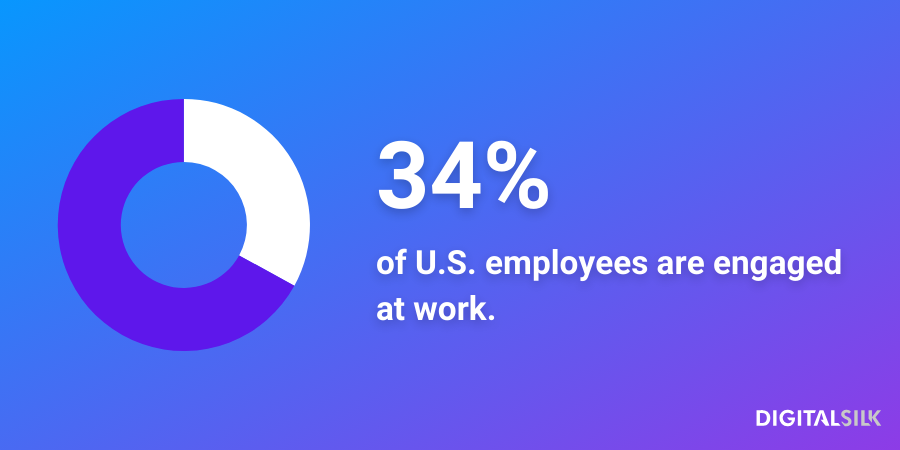
eCommerce Challenge #16: Growing Competition
A recent survey found that before the global pandemic, only 7% of grocers worldwide had eCommerce channels.
During the peak of the pandemic, eCommerce shares of grocery retail grew to 10%.
What does this mean for you as a retailer?
eCommerce competition is fierce and to make your brand stand out, you should start investing in eCommerce channels.
The solution:
- Prioritize partnering with manufacturers less likely to sell products directly: To avoid having your retail partner become your competitor, team up with smaller brands or brands focused on producing and delivering goods to shops rather than selling them directly.
- Offer your products at lower prices or with additional benefits: If you can afford such incentives, it can help funnel customers to your store, instead of sending them to your manufacturer.

[Source: Walmart]
eCommerce Challenge #17: Customer Loyalty
Customer loyalty is a very fickle thing.
Without customer loyalty, your business may struggle since acquiring a new customer is five times more costly than retaining an existing one.
Customer loyalty is a matter of brand integrity and mutual trust between a seller and a customer.
Since there is no face-to-face interaction in an eCommerce store, the development of trust and loyalty takes more time and effort.
The solution:
- Provide a high-quality customer service: Customer loyalty is the result of great customer service, so you need to make sure your customers are satisfied with the entire process of purchasing online, from browsing your store casually, to ordering online and receiving their purchase. Adjust customer service and other processes based on feedback from your consumers.
- Be transparent: Since eCommerce stores lack a human connection, you need to create one. Display testimonials and reviews from happy shoppers, ensure your contact details are readily available and offer an engaging user journey through UX, targeted messaging and unique CTAs.
- Use loyalty programs: Multi-tiered programs that reward returning customers with points, discounts and coupons are a great customer service tool that fosters loyalty and engagement and keeps customers coming back.
- Publish blog articles: Content marketing such as informative blog posts relevant to your audience can help build trust and boost your credibility. While it isn’t necessary, a blog can help drive traffic to your website and improve your ranking on search engine result pages (SERPs).

They offer free shipping, discounts early access and special offers to new customers who join their membership club. This program helps boost loyalty and keeps customers coming back for more.
[Source: Kérastase]
We’re eCommerce specialists. Schedule A Consultation
eCommerce Success Stories From Unexpected Coronavirus Challenges
New events, trends or technologies can greatly impact your eCommerce brand’s operations, and there is no better example or this than the Coronavirus pandemic.
While many businesses struggled to deal with the sudden and drastic challenges they faced, others turned the situation to their advantage.
Three eCommerce Covid-19 success stories to take inspiration from in the case of future unexpected events include:
Success Story #1: Nike
Nike took action by waiving online fees for NTC Premium, their subscription program behind services including the Nike+ app, and providing free access to fitness classes and other resources.
The growth in membership is a positive association for the brand, encourages activewear purchases for at-home workouts and gets users hooked on the platform before it becomes paid again.
For example, the Nike Run Club app was downloaded 15.4 million times between January and November 2020, up 45.3% from the previous year.
By making its premium content free, Nike also manages to showcase its content and increase the number of new potential customers who can later turn into long-term paying subscribers.
Success Story #2. Chewy
CivicScience ran a survey to find out how pet owners deal with the crisis in 2020. The company discovered that 17% of Americans are now ordering more food for their pets online than ever before.
Additionally, there was an increase in pet adoption which could be seen as an influence on increased demand for pet food and supplies. All of which benefited online pet supply retailer Chewy.
Success Story #3: Lululemon
While supply chain and delivery were issues for many companies at that time, a decision that paid off for Lululemon was their investment in RFID (radio-frequency identification) tech.
The tech enables real-time knowledge of where every product is, be it in-store or at a distribution facility, to support online sales processes.
The company also bolstered its digital strategy by hosting virtual Pilates, yoga, dance and other classes.
When other apparel brands were experiencing sales declines, Lululemon’s North American eCommerce business accelerated its growth rate since the stores shut down on March 16, 2020.
The athletic company reported a fourth-quarter net income of $298 million up from $218.5 million the previous year. Its same-store sales also soared 20%, including a 41% boost in the direct-to-consumer channel.
Digital Silk builds custom e-stores. Request a Quote
Navigate The Challenges Of eCommerce With Digital Silk
Managing your own eCommerce business for the first time can be a daunting task, knowing that the industry faces a lot of challenges.
However, acknowledging the possible challenges that lie ahead and creating a plan for each scenario can help you navigate the waters.
At Digital Silk, we provide expert solutions to help your brand handle these challenges of eCommerce.
As a full-service agency, we deliver a range of services to grow your eCommerce brand, including:
- Custom eCommerce development
- Magento development
- Shopify development
- eCommerce web design
- Digital marketing and SEO
What makes Digital Silk stand out from the crowd?
For every eCommerce project, we ensure:
- Project ownership
- Total transparency
- Measurable results
Contact our team, call us at (800) 206-9413 or fill out the Request a Quote form below for a free, custom consultation about your online store!
"*" indicates required fields




